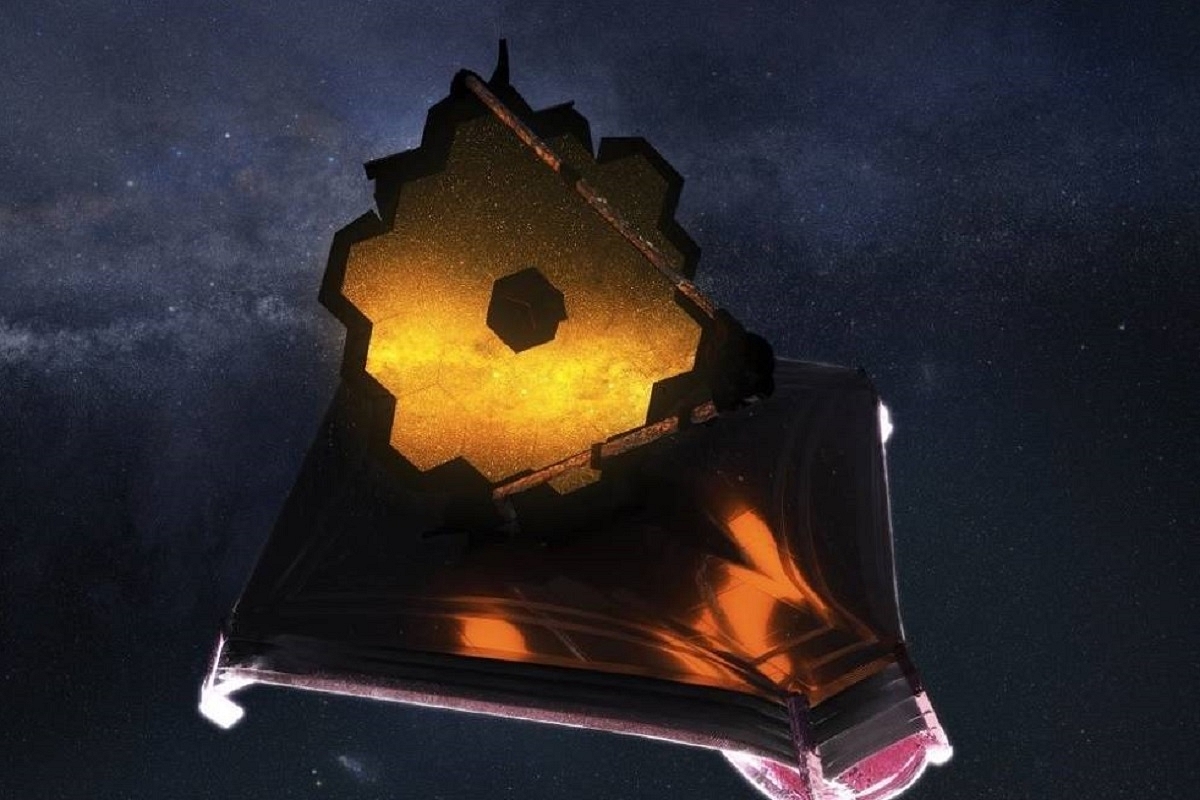Science
NASA's James Webb Space Telescope Arrives At Final Orbit Around Second Earth-Sun Lagrange Point

James Webb Telescope (Pic Via NASA Website)
NASA's James Webb Space Telescope has arrived at its gravitational parking spot in orbit around the sun on Monday (24 January), almost 1.6 million km from Earth.
"Webb fired its onboard thrusters for nearly five minutes (297 seconds) to complete the final postlaunch course correction to Webb’s trajectory. This mid-course correction burn inserted Webb toward its final orbit around the second Sun-Earth Lagrange point, or L2, nearly 1 million miles away from the Earth," NASA said in a statement.
The final mid-course burn added only about 3.6 miles per hour (1.6 meters per second) – a mere walking pace – to Webb’s speed, which was all that was needed to send it to its preferred “halo” orbit around the L2 point, the US space agency said.
Webb’s orbit will allow it a wide view of the cosmos at any given moment, as well as the opportunity for its telescope optics and scientific instruments to get cold enough to function and perform optimal science.
The thrusters were activated by mission control engineers at the Space Telescope Science Institute in Baltimore, and the ground team used radio signals to confirm that Webb was successfully "inserted" into an orbital loop around L2.
From its vantage point in space, Webb will follow a special "halo" path in constant alignment with Earth, as the planet and telescope circle the sun in tandem, enabling uninterrupted radio contact.
Webb, jointly developed by NASA, the ESA (European Space Agency) and the Canadian Space Agency, launched on 25 December last month from Europe’s Spaceport in Kourou, French Guiana.
On 8 January, Webb finished unfolding in space after having been stowed inside the nose cone of an Arianespace Ariane 5 rocket for launch.
The mission operations centre has also begun fine-tuning the telescope's primary mirror - an array of 18 hexagonal segments of gold-coated beryllium metal measuring 21 feet, 4 inches (6.5 meters) across - far larger than Hubble's main mirror.
Its size and design to operate mainly in the infrared spectrum will allow Webb to peer through clouds of gas and dust and observe objects at greater distances, thus farther back in time, than Hubble or any other telescope, reports Reuters.
Introducing ElectionsHQ + 50 Ground Reports Project
The 2024 elections might seem easy to guess, but there are some important questions that shouldn't be missed.
Do freebies still sway voters? Do people prioritise infrastructure when voting? How will Punjab vote?
The answers to these questions provide great insights into where we, as a country, are headed in the years to come.
Swarajya is starting a project with an aim to do 50 solid ground stories and a smart commentary service on WhatsApp, a one-of-a-kind. We'd love your support during this election season.
Click below to contribute.
Latest